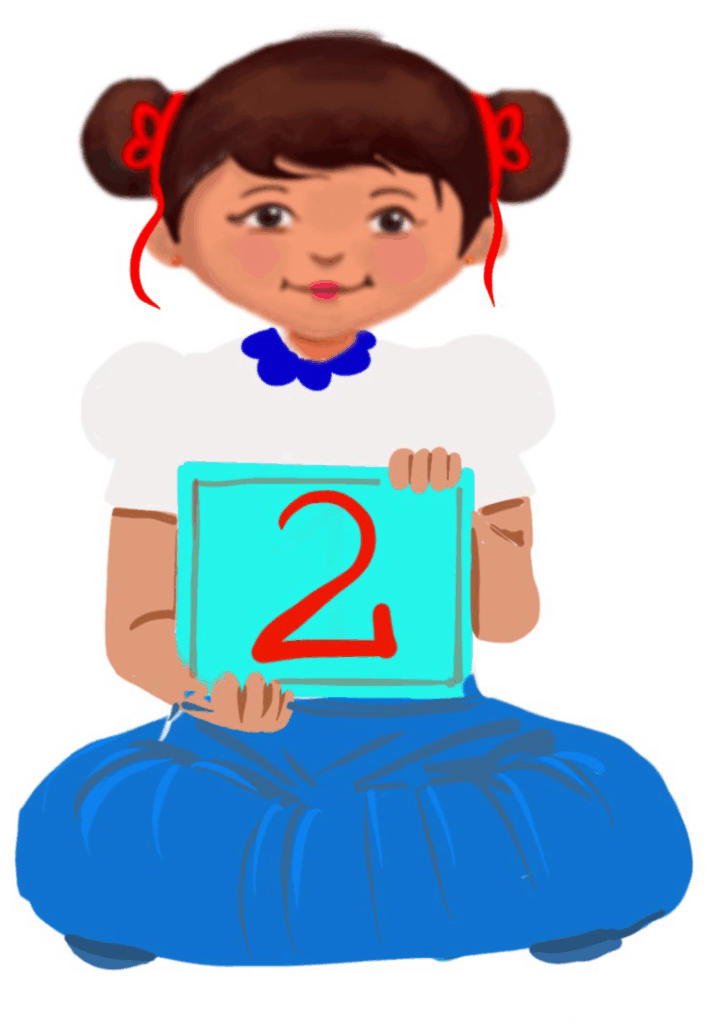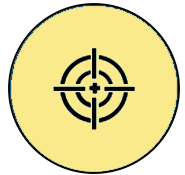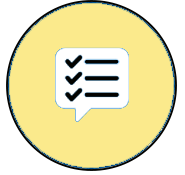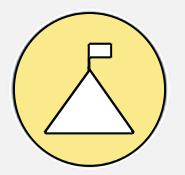
Input and Output Devices
Class 2
 Objective
Objective
Students will be able to identify the input and output devices of a computer.
 Prerequisites
Prerequisites
Students should know and identify what a computer is and the parts of a computer.
 Goal
Goal
All
All children will be able to recognise the input devices of a computer.
Some
Some children will understand what is the meaning of input and output.
Few
Few children will be able to identify the input and output devices of a computer.
Operational Definition
All – This gives the goal, which is the minimum that the teacher must achieve for all students in the classroom.
Some – This gives the goal that the teacher may try to achieve for some students in the classroom who can achieve the suggested goal over and above the goal stated for ‘All’.
Few – This gives the goal that the teacher may try to achieve for a few students in the classroom who can achieve the suggested goal over and above the goal stated for ‘Some’ and ‘All’.
Materials Required:
Technology
- An audio-enabled computer with an internet connection, smartboard projector and screen.
- All devices like laptops, tablets and desktop computers with accessibility features enabled.
- Screen readers like JAWS and NVDA.
- Large keyboards, built-in screen magnifiers, hearing aids, text-to-speech and speech-to-text software.
- Voice recognition software like Siri, Windows Speech Recognition, etc.
- Headsets.
- Student writing or typing tools.
Teacher Materials
- Whiteboard and markers or blackboard and chalk.
- Pre-teach vocabulary cards, sight words, communication cards and worksheets.
- Lesson videos.
Student Handouts
- Handout 1: Communication Cards
- Handout 2: Vocabulary Cards
- Handout 4: Trace and Learn Card
- Handout 5: Yes or No Cards
- Handout 6: Thumbs Up and Down Card
- Handout 7: Worksheets
Print Preparation
- Communication Cards for students
- Trace and Learn Cards for students
- Vocabulary Cards for students
- Thumbs up and Thumbs down Card for students
- Yes or No Cards for students
- Pre-teach vocabulary cards, sight words cards
- Worksheets for students
Preparation of Activity:
- All the learning and teaching materials needed for this lesson plan must be ready before the lesson begins.
- Ensure that there are enough copies for all children. Multiple copies can be made by photocopying too.
- Please have the assistive technologies and accessibility features ready for your inclusive classroom.
Setup for transacting the lesson:
This topic must be taught in the computer lab.
Notes to the Teacher
Begin the topic with pre-teach vocabulary and a pre-assessment worksheet
1. Pre-teach Vocabulary
- Students should know the vocabulary (words/meaning of the words/spellings/pronunciation of the words as per the requirement of the lesson). This chapter uses words like input, output, processing, devices, data and program, to explain the concept. The teacher as to explain these terms with the help of the story given below.
- The teacher has to explain the meaning of the term ‘data’. Data could be words, numbers, symbols, pictures, etc.
- The teacher has to explain the meaning of the term ‘processing’. Working on data to give us some result is ‘processing’.
- The teacher has to explain the meaning of the term ‘program’. All the instructions that a computer uses to process the data is called a ‘program’.
- The teacher has to tell the students that the computer is made of many parts, and these parts are also called ‘devices’
2. Kamala’s Tech Journey with Daddy
Kamala is a 2nd grade student. One day she asked her father who was working on his laptop, “Daddy, what is this called?”
Daddy said, This is a laptop!!
Kamala: You call it a laptop and my teacher calls it a device. I am confused.
Daddy: Kamla, ‘device’ is a common name for an instrument such as a computer, tablet, smartphone, etc. These are ‘electronic devices’ and are man-made.
Kamala: Daddy, that means a bulb is also a device, isn’t it?
Daddy: Good question, Kamla. A bulb is a device, but it is an ‘electrical’ device.
Daddy asked, Can a bulb show you a picture?
Kamala: Oh no, Daddy. It can only give light.
Daddy said, That’s the difference. Anything that produces heat, light, etc. are ‘electrical’ devices, while all that can show videos, play music and even help us learn are ‘electronic’ devices. They work using the data stored in them.
Kamala asked, What is data?
Daddy: Do you remember your friend’s birthday?
Kamala: Oh yes, Daddy, I know all my friends’ birthdays, your birthday, Mum’s birthday, and all that.
Daddy asked, How is that? What makes you remember all these?
Kamala thought for a while and said hesitatingly, “It’s all in my memory.”
Daddy said, Exactly. Your brain stores all this information. Similarly, we can store more such information in electronic devices like computers, tablets, phones, etc. These are called data.
Kamala: Oh. When we take pictures with our phone, they get stored on our phone. Is that data too?
Yes. Data can be in any form, such as numbers, words, pictures, or sounds.
Kamala: Daddy, what is processing and programming?
Daddy asked, What is 2 + 2?
Kamala: Daddy, such an easy question. It is 4.
Daddy asked, What is 1824 + 448?
Kamala: Oh Daddy, it’s not easy. I need to think and work.
Daddy: You have answered your question, Kamla. Whenever a device thinks and works on data to give us a result, it is called processing.
Kamala said, Oh, that’s easy, but when I add using a calculator, it gives the result immediately!!
Daddy said, Yes, that answers your next question on ‘programming’. Your calculator is fed with a set of instructions to process the data quickly. This is called ‘programming’. In simple terms, your calculator is programmed.
Kamala: Oh, I got it. It is like when Mummy gets a recipe from the phone.
Daddy: Exactly. They are like recipes. They tell the device what steps to follow.
Video: Kamala’s Tech Journey with Daddy
Video: Kamala’s Tech Journey with Daddy with ISL
The teacher could ask the children to check whether they know the meaning of ‘in’ and ‘out’. The teacher could ask the children to show what is ‘in’ and what is ‘out.’
Terms like ‘input’ and ‘output’ can be explained by showing the video provided along with the lesson plan or relevant examples and discussing the meaning of input and output. The teacher explains to the students that during cake-making, the ingredients added are the inputs, what happens when the cake goes in the oven is called ‘processing’, and the output is the cake.
Video: Inputs and Output in Cake Baking
Example 2. Making banana milkshake
- The word ‘processing’ means making something.
- A kitchen appliance is a device that chops and slices fruits, vegetables, etc.
The concepts could be taught to the students with the help of examples and by using a multi-disciplinary approach. (For example, the ‘input’, ‘output’, and ‘processing’ concepts can be taught as a fun activity during class).
Video: Inputs and Output in Banana Milkshake
Video: Inputs and Outputs in Banana Milkshake with ISL
2. Expected Prior Knowledge
Awareness of the extent of a student’s prior knowledge of the topic will help the teacher plan and deliver the lesson appropriately.
This could be assessed through the provided worksheet.
Worksheets, Vocabulary Cards, Sight Words:
Worksheet: Pre-Assessment
Enlarged Worksheet: Pre-Assessment
LTM: Sight Words
Worksheet: Match the Sight Words
Enlarged Worksheet: Match the Sight Words
Wordwall: Type the Correct Word
Wordwall: Input and Output Devices Word Search
3. Fun Activity – Banana Milkshake
Aim: To prepare a banana milkshake.
Resources required:
- Blender – 1
- Bananas – 2-3 chopped
- Milk – 1 -2 cups
- Sugar – 1- 2 spoons(Optional)
- Ice cubes – Optional
- Glasses
This is for 2 -3 servings. Scale the numbers based on the servings.
Setting for the activity: Group activity(4 children in 1 group)/Indoor
Type of Activity: Creation
Preparation of Activity:
- The teacher has to bring a mixer grinder for the activity in the school.
- The teacher could ask the children to bring milk and bananas. Children have to carry their own glasses from home.
- All the ingredients for the activity, like milk, bananas, and sugar(optional), must be bought well in advance.
Role of the Teacher: Facilitator
Role of a peer buddy: Give instructions and help the children who need help.
Procedure:
- Peel off the bananas.
- Add milk and peeled bananas in a blender jar and blend smoothly. Sugar also could be added.
- Pour the crushed ice on top. (optional)
Observation: The students blend a smooth banana milkshake.
Conclusion: The students will know the process involved in making a banana milkshake, the inputs that went into the making of the milkshake, and the output.
Suggested variation in rules: Other ingredients like dry fruits, cinnamon powder, milk cream, and vanilla essence could also be added per the taste
- Children with disabilities could take extra time to complete the same task.
- They have to get help from a peer buddy.
- Modify the recipe based on dietary restrictions, allergies, or specific dietary requirements.
- Adjust the thickness or consistency of the milkshake to suit children’s preferences.
- Depending on the requirement, children may need adaptive tools while conducting the activity.
A few of the adaptive tools are given below:
A non-slip mat for stability
Spill-proof cups or containers
Easy-to-use utensils or blender switches
A blender with safety-lock feature
One-handed cutting boards or slicers - Assist with ingredients
Depending on the child’s ability, he/she may need help with:
Peeling and cutting bananas (use safety knives if appropriate)
Measuring ingredients
Pouring milk - Engage all senses
If the child has sensory processing needs, involve his/her in sensory exploration.
Let them touch, smell, and taste the ingredients.
Use vanilla or cinnamon for added sensory stimulation.
Suggested scaffolds for assistance and practice:
- Promote independence:
Encourage the child to participate actively. Small tasks like pressing the blender button or stirring can foster independence and confidence. - Emphasise that making a banana milkshake is a fun and enjoyable activity. Encourage the children to savour the sensory experience and take their time if needed.
- Cleanup together:
Involve the children in the cleanup process. It’s an essential part of life skills and teaches responsibility.
Remember that every child is unique, and their abilities and preferences vary. Tailor the process to their specific needs, and be patient and supportive throughout. The goal is to create a positive and inclusive experience while ensuring the child’s safety and comfort.
Precautions:
- Care has to be taken while handling the blender.
- Blending has to be done only by the teacher.
- Pour the juice slowly into the glasses, which must be stainless steel or plastic.
- Check if any child has nut allergies before adding nuts to the milkshake.
Follow-up activity:
Discussion questions:
1. What inputs were put into the blender?
Answer: Bananas, milk, sugar
2. What is the output of blending banana, milk and sugar together?
Answer: Banana milkshake
Extended discussion:
3. A railway station has a weighing machine. You put a coin in; you get a ticket with your weight printed. What is the input and output for this?
Answer: The input is the coin and the output is the ticket.
4. Discuss with the children how a fruit tree grows from a seed. Ask them about the various steps involved. Ask them what the inputs and outputs are.
Answer: Water and sunshine are the inputs, and the fruits, leaves, branches, etc., are the outputs.
Alternative option: Any other fruit shake could also be considered, or fruit custard could be done.
Notes to the Teacher:
- The teacher has to provide glasses for children who forget to carry their glasses.
- All the precautionary measures must be followed.
4. Warm-Up
1. Write the words ‘input’ and ‘output’.
What is the first thing that comes to mind when thinking of the words ‘input and output’?
Possible Answers: input- put something inside, output- making something new
Differentiation
- Students can write down answers in their notebooks or on a slip of paper and stick it on the corkboard.
- Students can choose to write their answers or communicate their responses verbally with a friend/teacher.
- Students can draw the word or point to the picture on the Communication Card (a Communication Card handout should be provided).
- The teacher should immediately praise the student with her/his name and reward the child.
Worksheets and Communication Cards:
Worksheet: Vocabulary
Enlarged Worksheet: Vocabulary
Worksheet: Trace and Learn
Enlarged Worksheet: Trace and Learn
LTM: Thumbs Up and Down
LTM: Yes or No Cards
5. Input and Output Devices
Guided watching
Bring the attention of the students to the screen and say, “Let’s watch this video.”
Ask students to give a ‘thumbs up’ whenever they hear or see the word ‘input’ or ‘output’ in the video.
Play video
Video: Input and Output Devices
Video: Input and Output devices with ISL
Poster: Input and Output Devices
Enlarged Poster: Input and Output Devices
Informal Assessment (After playing videos)
1. Ask, “What is an input device?”
If needed, prompt the children to come up with a definition using language from the video.
Example: An input device sends information to the computer system.
Write the answer on the board after students respond.
Ask, “Is the keyboard an input device?” (The answer is yes)
Ask, “Is the monitor an output device?” (The answer is yes)
Ask, “Is the mouse an output device?” (The answer is no)
Differentiation
Verbal response
Verbal response or hold up Yes or No card
Hold up or points to Yes or No card
Worksheet: Informal Assessment
Try Me: Input Output Devices
5. Input-Process-Output Cycle
A computer also has an Input-Process-Output (IPO) cycle. It accepts data, processes it and gives the desired output.
Input devices:
The devices that are used to enter data into the computer are input devices.
Processing:
The device that works on the input is processing.
CPU (Central Processing Unit) is the processing device.
It is the brain of the computer.
Output devices:
The devices that help us get the results are output devices.
Poster: Input-Process-Output Cycle
- Data is entered into the computer using a keyboard, mouse, web camera, scanner, etc.
- The CPU does the processing.
- Output comes from the speaker, printer, monitor, and headphones.
Input Devices:
-keyboard
-microphone
-mouse
Output Devices:
-printer
-monitor
-speaker
Video: Input-Process-Output Cycle
Video: Input-Process-Output Cycle with ISL
Try Me: Input-Process-Output Cycle
6. Activity – Input and Output Devices
Aim: To demonstrate the input and output devices and have hands-on experience.
Materials required: Computers, laptops, printers, sheets of papers to print, speakers
Setting for the activity: Computer lab
Type of activity: Creation
Preparation for the activity: All the materials needed for the activity have to be available in the computer lab. The children must go to the computer lab and be seated.
Procedure:
1. The teacher has to:
a. Play the music and show the input and output devices.
b. Type 2-3 sentences, take a print and explain the input and output device.
Suggested variation in rules and pace:
- Hands-On Learning: Incorporate hands-on activities and interactive experiences to engage the children. Allow them to touch, manipulate, and experiment with different devices whenever possible. For instance, let them press keys on a keyboard, touch a touchscreen, or use a mouse.
- Device Identification: Show each device to the child individually. Talk about its name and purpose. Use labels or pictures to reinforce their understanding. You can say, “This is a keyboard. We use it to type letters and numbers into the computer”.
- Categorisation: Ask the child to sort the devices into two categories: input devices and output devices. You can create labels with ‘Input’ and ‘Output’ written on them to help with this task. For example, the child can place the keyboard and mouse under ‘Input’ and the computer monitor and speakers under ‘Output’.
- Function Matching: After sorting, reinforce understanding of the function of each device. For example, for input devices, you can ask the children, “Which devices help us put data into the computer?” For output devices, you can ask, “Which devices show or give us information from the computer?”
- Pretend Game: The children can pretend as if they are using the devices. For example, the child can pretend to type on a keyboard or click on the mouse.
- Review: Review the names and the functions of the devices to reinforce learning. Repeat the steps as needed.
- Creative Activity: You can create a simple project or craft related to input and output devices depending on the children’s abilities and interests. For instance, they can draw pictures of devices or make a collage.
Suggested scaffolds for assistance and practice:
- Allow the children to do it themselves, and the teacher could do it with the children.
- Sensory Integration: Consider using sensory materials like textured keyboards or sound-activated devices for feedback.
- Repeat and reinforce the concept.
- Be patient and offer multiple opportunities for practice.
- When explaining the touch screen, encourage the child to both – see and touch the screen.
- Real-life example: Connect the concept of input and output devices to real-life examples, like playing games, operating a TV remote control, etc.
- A group activity can also be conducted where different students act as the different inputs required for growing a plant. Students playing the role of inputs can be sun, water, soil, etc. Some students can act as leaves, flowers and fruits to show the output.
- The teacher could also ask the students to draw the input and output devices.
Precautions:
- Teachers should monitor the students while dealing with the devices.
- Handle the mouse, laptops and other devices carefully.
- Blink often to avoid eye strain.
- Do not move, change or delete any icons on the desktop.
- Be careful with the electric plugins.
7. Colouring Activity
Worksheet: Colouring Activity
Enlarged Worksheet: Colouring Activity
8. Sort the Input and Output Devices
Aim: To sort the input and output devices.
Materials required: Laminated sheets with velcro attached.
Setting for the activity: Indoor
Type of activity: Individual
Preparation for the activity:
- The teacher must take the printout of the above-given printables and laminate them.
- The rough side of the velcro has to be attached to the first sheet.
- Next, cut the pictures along the dotted lines and stick the soft portion to each picture.
Procedure:
The children have to be provided with the materials, and the children have to decide which picture goes into which column.
Suggested variation in rules and pace:
- Children could be given extra time to complete the task.
- Children could work in pairs or a team.
- The teacher could first show the children how the activity is done and which card goes into which category.
Suggested scaffolds for assistance and practice:
- The visual cues will help the children sort the input and output devices.
- Verbal prompts can also be used by the teacher, which will help the children remember the sorting categories, like, “Where does the keyboard go”?
- The teacher could physically guide the child’s hand as he/she sorts the pictures.
- After providing a lot of support and prompts, the teacher has to reduce the level of support so that the child becomes proficient at sorting and develops independence and self-regulation skills.
- The teacher has to provide opportunities for the child to practice sorting regularly.
- A peer could also help the visually impaired children in the activity.
- A word wall activity is also provided for children with reading and writing difficulties.
- Verbal praise or a small reward is always recommended when the child successfully completes the task.
LTM: Input and Output Devices – Sorting Activity
LTM: Sorting Activity Printable
Wordwall: Sort the Input and Output Devices
9. Assessment
Assessment Type: Summative assessment
Prerequisite:
Children should know the meaning of input and output devices.
Children should be able to read the words.
Suggested variation in pace:
Students could take a few extra minutes to complete the worksheets.
Suggested variation in perceived challenge:
1. Children could also record their responses or answers or use response cards to convey the answers to their peers.
2. They may also be allowed to dictate their responses (especially students who have visual disabilities).
3. Students may also be given additional time to complete the worksheet.
4. Students could take the assessments using the Wordwall.
Suggested scaffolds for assistance and practice:
The teacher could help the students while reading the words.
The teacher could activate the prior background knowledge of the students by playing the video again.
The teacher could break the task into smaller, more manageable parts. Students could also express themselves using gestures or visual aids.
Children who can draw a computer could be allowed to draw and the rest could colour the picture.
Worksheet: Input and Output devices Regular
Enlarged Worksheet: Input and Output devices
Worksheet: Input and Output devices Yes or No Regular
Enlarged Worksheet: Input and Output devices Yes or No
Wordwall: Input and Output devices True or False
Wordwall: Input and Output devices Categorise
10. Assistive Technologies and Adaptive Devices
Assistive Technologies and Adaptive Devices
Teacher Resource Document
| Source and Attribution of images: All images used in the above Assets and Aids are originally created/licensed. |
| This digital material has been developed by the Sri Sathya Sai Vidya Vahini Inclusive Education, a unit of Sri Sathya Sai Central Trust, Prasanthi Nilayam, as a collaborative offering in the service of our nation. |